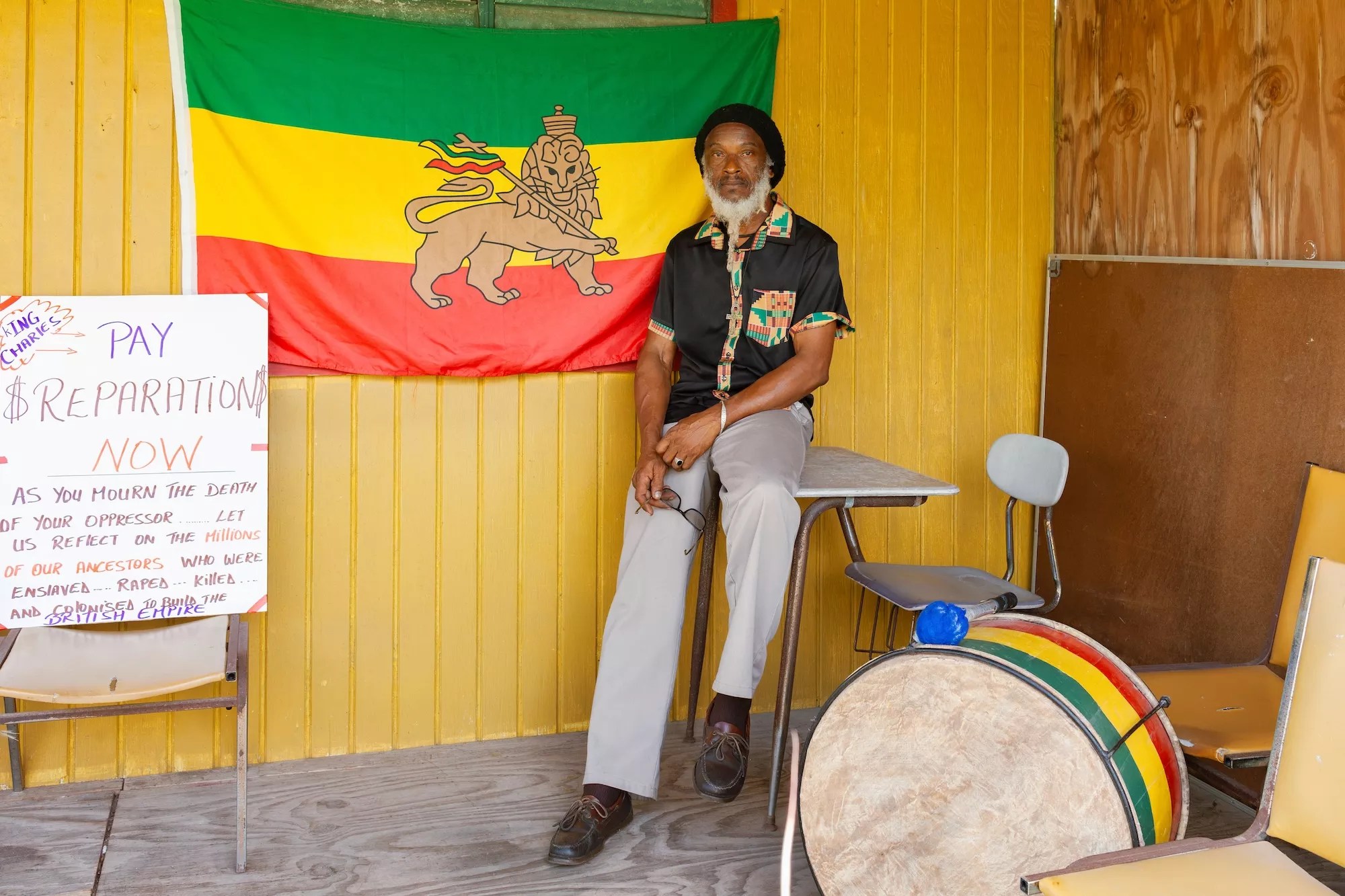
Photo by Kacey Jeffers, courtesy of the artist and Frost Art Museum

Audio By Carbonatix
Kacey Jeffers describes Nevis, the Caribbean island where he grew up, as something like a small town. At only 93 square kilometers and a population of 12,000, it’s the smaller of the two islands that make up the former British colony of Saint Kitts and Nevis. It’s the kind of place where “you could go to town and leave your doors unlocked” and the kind of place that, however idyllic your childhood may be, you know you’ll probably have to leave behind. Especially if you want to be an artist.
“It’s a good place to grow up, but it’s not a good place to be a young person. The opportunities are very limited,” he says. “There isn’t really an emphasis placed on creativity.”
Jeffers, a photographer and one-time runway model, now lives in New York, but his frequent visits to his home island form the core of his work. Intimate portraits of neighbors and family, photos of local bars and J’ouvert, the island’s Carnival celebration – it’s this body of work that has earned him a following within the art world, and of “Multitudes,” his debut museum exhibition at the Patricia and Philip Frost Art Museum at Florida International University (FIU).
Curator Yady Rivero says she chose to show Jeffers’ work to shed light on a country that’s “very underrepresented in the global art conversation.” The show, which debuted in January as part of the university’s annual Martin Luther King Jr. Day commemorations and runs through May 4, is also part of an effort to explore different perspectives of the Caribbean that aren’t usually emphasized in Miami.
Will you step up to support New Times this year?
At New Times, we’re small and scrappy — and we make the most of every dollar from our supporters. Right now, we’re $16,750 away from reaching our December 31 goal of $30,000. If you’ve ever learned something new, stayed informed, or felt more connected because of New Times, now’s the time to give back.
“It was important to highlight his work and also celebrate the Caribbean in a new way,” says Rivero, who is of Dominican heritage. “Usually, here in Miami, we have a lot of Caribbean art on view, but it prioritizes the Hispanic Caribbean. And so, for me, I thought it could be special to introduce a new voice to our audiences here.”

Kacey Jeffers, Untitled (Jazzique and his family at the pool), Golden Rock Inn, from the series “Postcards From The Future”
Photo by Kacey Jeffers, courtesy of the artist and Frost Art Museum
Two of Jeffers’ photo series, in particular, highlight the ways in which the island’s culture and economy have evolved as a result of British colonialism. The “Uniform” series depicts schoolchildren in their uniforms, analyzing how they attempt to resist an enforced conformity brought down upon them by authority figures. Though the country declared independence from the British in 1983, the uniforms are a remnant of colonial policy. The students’ modifications to them ultimately afford their gestures a deeper meaning of continued resistance.
“It was one of those projects where I started to think about using my own personal stories as a reference, as opposed to something external,” says the photographer. “It was 26 portraits of school kids in uniforms. That’s the basic idea of it. But it’s more so about looking at individuality and personality through the wearing of the uniforms and looking at the ways in which people are able to have a sense of identity, a sense of individuality, even if you’re all wearing the same outfits.”
Jeffers also returns to the subject of post-colonialism in a series of images commissioned by Time magazine upon the death of Queen Elizabeth II in 2022.
The artist had been visiting home when the news broke and ended up finding a variety of reactions. “I was kind of like, ‘Well, I don’t even care,'” he says. “So it was quite an interesting commission. And I really liked it because it just forced me to think really fast, on my feet.”

Kacey Jeffers, Untitled (Mi tired), from the J’ouvert series
Photo by Kacey Jeffers, courtesy of the artist and Frost Art Museum
In one scene, Muffet, a local bar owner, and her customers toast the queen’s long life, albeit without much passion. Another shows activist Ras Iroy standing next to a Rastafarian flag – a symbol of the faith borne out of resistance to British colonialism – and a sign demanding the newly crowned King Charles III “Pay reparations now” and beseeching his fellow Nevisians “As you mourn the death of your oppressor, let us reflect upon the millions of our ancestors who were enslaved, raped, killed, and colonized to build the British Empire.”
What may be his most insightful series, however, is a series of photos produced for the Golden Rock Hotel, a local resort owned by artists Helen and Brice Marden. Jeffers’ photos, shot in a style similar to commercial photography, feature Black patrons enjoying the resort. Here, he calls into question the dynamics of the Caribbean tourist economy, where the mostly Black locals service a mostly white leisure class. Such an interrogation of the industry should resonate deeply in Miami, a place that is also dependent on vacationers, for better or worse.
– Douglas Markowitz, ArtburstMiami.com
“Kacey Jeffers: Multitudes.” On view through Saturday, May 4, at the Patricia and Philip Frost Art Museum, 10975 SW 17th St., Miami; 305-348-2890; frost.fiu.edu. Admission is free. Tuesday through Saturday 10 a.m. to 5 p.m. and Sunday noon to 5 p.m.